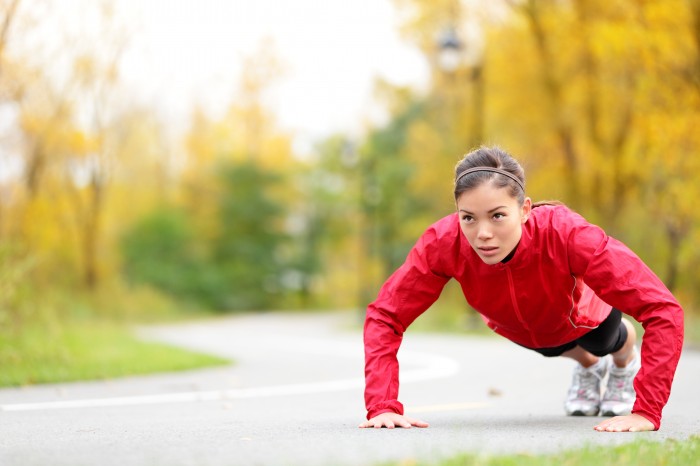
By Joel Peterson – Level 5 Personal Trainer at Apple Athletic Club
A couple of weeks ago we gave you nine great movements that you can do at work or home. This week we are going to add some additional exercises to further you along your road to radiant health. Before we launch into Part Two of this article, let’s re-cap a few things from previous articles:
- Prolonged sitting and inactivity is a danger to our overall health
- The average American sits eight hours a day
- Muscles burn less fat and blood flows more sluggishly during a long sit, allowing fatty acids to more easily clog the heart
- 2011 study found a decline in insulin response after just one day of prolonged sitting
- Studies have linked sitting to a greater risk for colon cancer
- When you slump in a chair, muscles go unused leading to muscle degeneration
- People who sit more are at greater risk for herniated lumbar disks
For more detailed risks of prolonged sitting and inactivity reference our previous issue “Prolonged Sitting is Dangerous to our Health”
A Point to Ponder
If you are not a regular exerciser, by the time you are 65 you may experience as much as an 80% decrease in your muscle strength.
Space medicine has done a lot to help us understand why sitting is so detrimental. Dr. Vernikos was in fact one of the primary doctors assigned to keep NASA astronauts from deteriorating in space. In a previous interview, she explains that the human body deteriorates at a faster speed in anti-gravity situations, and, as it turns out, sitting for an extended period of time actually simulates a low-gravity type environment!
Physical movements such as standing up or bending down, on the other hand, increase the force of gravity on your body. Again, anti-gravity environments speed up cellular deterioration, so the key is to disengage from this low anti-gravity situation as much as possible by standing up and moving about.
The problem is that our modern society and our reliance on technology has reduced or eliminated many of these opportunities for low-intensity intermittent movement and replaced it with chronic sitting, typically staring in one direction. Some people have even taken to texting other family members inside the same house instead of getting up and walking into the next room. All of this sloth-like inactivity adds up and can take years off your life by speeding up cellular deterioration.

Staying Active
It’s becoming increasingly clear that staying active—and by that I mean engaging in virtually any physical movement—as much as possible, throughout the day, is critical for health and longevity. There are plenty of ways to get movements in during your work hours. I suggest taking a break to do one set of three exercises, anywhere from once every 15 minutes, to once per hour.
In the issue Exercises for Work and Home we provided nine super exercises. Below are some more advanced suggestions from fitness expert Lisa Huck. Again, ideally you’ll want to do at least one of these exercises every 15 minutes. Alternatively, you can combine two or three in a three-minute break once or twice every hour. The more frequently you get out of your seat, the better, because the frequency is the most important aspect.
Ready? Let’s Get Moving!
#1: Standing Hip Flexor #2: Standing Calf Stretch
#3: Standing Inner Thigh Stretch #4: Standing Back/Buttocks Stretch
#5: Kneeling Lunge Matrix Stretch #6: Hip Flexor, Hamstring, and Quad
Okay, let’s get ourselves use to these movements until they feel natural and comfortable, then let’s add them to the ones we have been working on.
Conclusion
We have provided Part 1 and Part 2 in the theme of Exercises for Work and Home. Look for Part 3 in subsequent weeks. Together, these three articles will help us Get Healthy Together as we continue down the path of health and energy!
